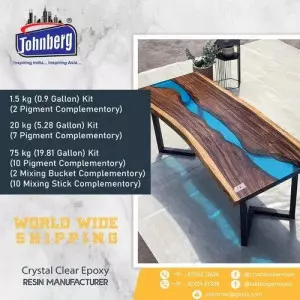- Home
- About Us
- Products
- Resin Furniture
- 3D Epoxy Flooring Service
- Resin Table Top
- Wooden Epoxy Resin Table Top
- Metallic Epoxy Flooring Service
- Conception Chemical Consultants
- Chemical Consultancy For Construction
- Construction Chemical Consultant
- Tile Grout
- Foundation Grout Consultant
- Paver Block Chemical Consultant
- Waterproofing Chemical Consultant
- Epoxy Pigment Consultant
- Heat Reflective Coating
- Water Repellent Coating
- Epoxy Grout
- Chemical Consultant
- Industrial Chemical
- Construction Chemical
- Epoxy Resin
- Epoxy Coating
- Polyester Resin
- Joint Sealants
- Cristal Clear Epoxy Resin And Hardner
- Construction Chemicals
- Polycarboxylate Ether And Liquid
- Solvent Cement
- Tile Protection Sheet
- Water Reducing Superplasticizer
- Epoxy Resin And Hardeners
- Two Component Waterproof Coating
- Epoxy Floor Coatings
- Casting Resin
- Sbr Latex Polymer
- Epoxy Grout Formulations
- Epoxy Resin Tabletops
- Tile Spacers
- Tile Levelling Spacers
- Industrial Night Vision Epoxy Grout
- Sbr Latex
- Johnberg Marble Polishing Liquid
- Acrylic Elastomeric Coating
- Weber Tile Adhesives
- Decorative Arts
- Resinic Crafts
- PU Flexible Tile Adhesive
- Resin Pressed Flowers
- Dry Pressed Flower
- Epoxy Putty
- Resin Furniture
- Services
- Updates
- Gallery
- Contact Us
Resin Table Top In Jamnagar
Details of Resin Table Top
A resin table top is a type of surface made by combining resin (usually epoxy or polyester) with other materials, such as wood, stone, or pigments, to create a highly durable, water-resistant, and often decorative finish. Here's a detailed breakdown:
Materials Used
Epoxy Resin (most common):
Two-part system: resin + hardener
Self-leveling, glossy finish
Crystal-clear or tinted
Wood Slabs (live edge wood is popular):
Common types: walnut, oak, acacia, maple
Often used in “river tables” (resin poured between two wood slabs)
Pigments & Additives:
Metallic powders, alcohol inks, glow powders
Used to add swirls, color depth, or special effects
Molds (for casting):
Silicone or HDPE to shape and contain resin
Design Styles
River Tables: Resin runs between two live-edge wood slabs, mimicking a river.
Ocean Tables: Resin is manipulated to look like waves or beaches.
Embedded Objects: Leaves, shells, stones, coins, or even photos are encased in resin.
Solid Resin: Fully cast resin in different colors or transparent finishes.
Properties
Feature Details
Durability Scratch-resistant, heat-resistant (to a point), impact-resistant
Finish Glossy by default; can be sanded to matte
Waterproof Excellent for indoor or outdoor use
Maintenance Easy to clean; avoid abrasive cleaners or direct heat sources
Manufacturing Process (Simplified)
Prepare the base (wood/objects) – sand, clean, seal
Build a mold or frame – often leak-proof
Mix resin and hardener – per manufacturer instructions
Add pigments (optional) – swirl or layer as desired
Pour resin – can be in one pour or multiple layers
Remove bubbles – with heat gun or torch
Cure – usually 24–72 hours depending on the resin
Sand and polish – for a smooth, glass-like finish
Typical Dimensions
Thickness: 1–2 inches for table tops
Sizes: Customizable; common sizes range from small coffee tables to large 10+ foot dining tables
Maintenance Tips
Use coasters for hot items
Clean with soft cloth + mild soap
Avoid cutting directly on the surface
Polish with automotive-grade polish for high gloss
Pros & Cons
Pros:
Customizable aesthetics
Durable & waterproof
Unique and artistic
Cons:
Expensive (especially custom pieces)
Can yellow over time (lower-quality resin)
Sensitive to UV unless UV-resistant resin
Offered Product
Resin Table Top
Product TypeTableColorTransparentUsage/ApplicationHomeTable TopResinBrandjohnbergCountry Of OriginMade In IndiaEpoxy Resin Tabletop Made With Highly Premium Category Material And Wood. It Gives Esthetic Look To Your Office And Home. Purely Hand Made And Made In India Product .... Read moreResin Table Top Manufacturers In Nashik
A Resin Table Top Is A Popular Type Of Furniture Surface That Combines Aesthetic Appeal With Durability. It’s Commonly Made Using Epoxy Resin, Which Is A Liquid Compound That Hardens Into A Solid, Glass-like Finish. These Tables Are Often Custom-made And Can Incorporate Wood, Pigments, Stones, Or Other Objects Within The Resin. Here’s A Breakdown Of The Details: Key ComponentsEpoxy Resin:Two-part System: Resin + HardenerCures Into A Solid, Clear Or Colored, Glossy Finish Continue
Resin Table Top Suppliers In Nagpur
A Resin Table Top Is A Popular Surface Design Made By Combining Resin (often Epoxy) With Wood, Pigments, Or Other Decorative Elements To Create A Durable, Glossy, And Often Highly Artistic Table Surface. Here's A Detailed Breakdown: What Is A Resin Table Top?A Resin Table Top Is Made By Pouring A Liquid Resin (usually Epoxy Resin) Onto Or Into A Mold Or Wooden Slab. Once Cured, It Forms A Hard, Clear (or Colored), High-gloss Finish That’s Resistant To Water, Heat, And Scratches. Continue
Resin Table Top Service In Karnataka
A Resin Table Top Is A Type Of Furniture Surface That’s Made By Combining A Base Material (like Wood, Stone, Or Metal) With Epoxy Resin Or Polyester Resin. These Are Often Used In Dining Tables, Coffee Tables, Office Desks, And Even Bar Tops Because They Are Durable, Eye-catching, And Highly Customizable. Key Features Of A Resin Table Top1. Material CompositionBase: Usually Wood (like Live Edge Slabs, Reclaimed Wood), MDF, Or Stone.Resin: Commonly Clear Or Tinted Epoxy Resin, Continue




